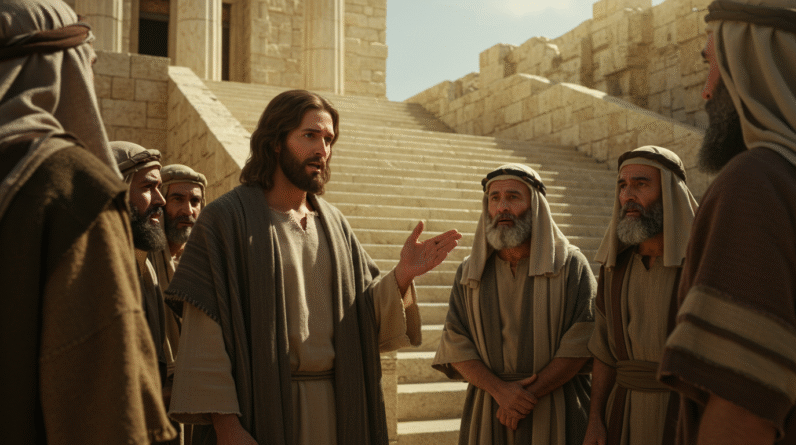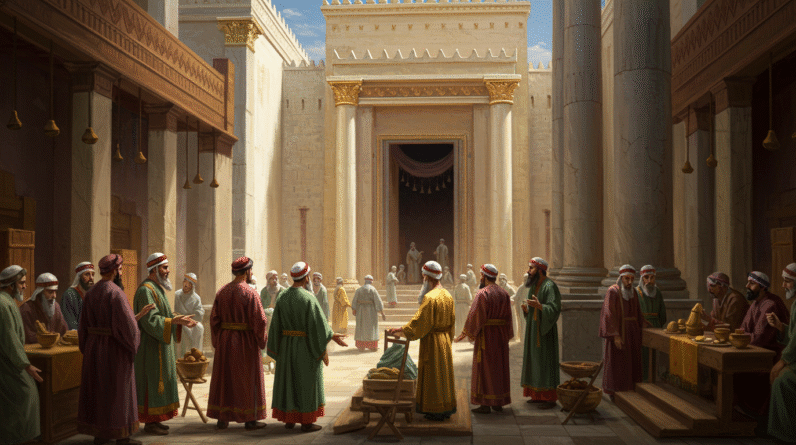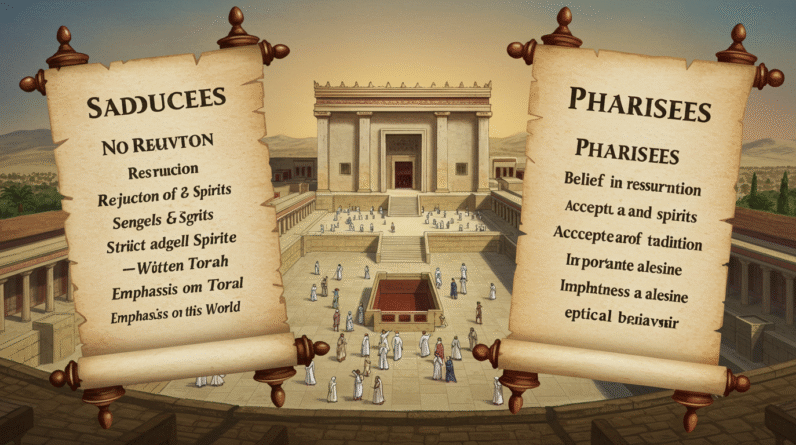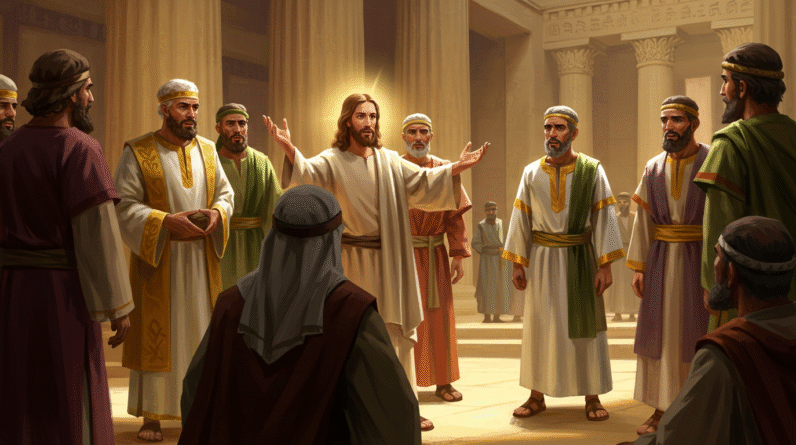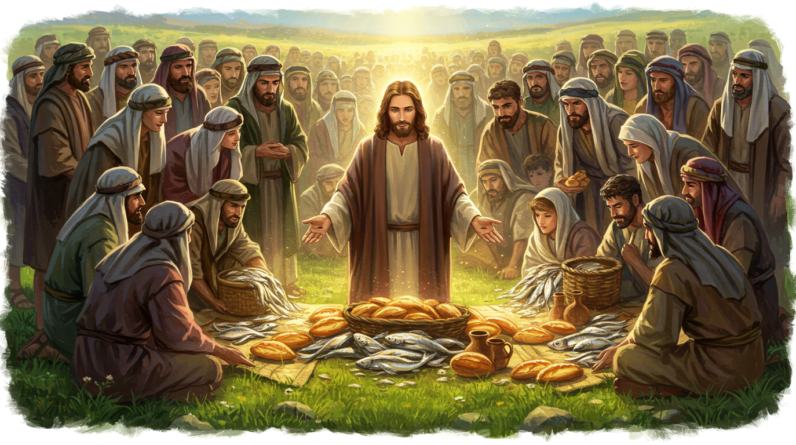Explore the Reubenites, Gadites, and half-tribe of Manasseh in Numbers 32. Dive into their choices, balancing personal desires with communal duties in ancient Israel.

Introduction
Imagine standing at the border of the Promised Land, a dream so close yet a decision impending that would alter your destiny. The Reubenites, Gadites, and the half-tribe of Manasseh found themselves in this very scenario. Perched on the precipice of Canaan, these tribes faced choices that highlighted their unique role in Israel’s journey and underscored universal themes of desire, duty, and divine direction. Central to their story in Numbers 32, these tribes serve as an intriguing study of faith and negotiation, reminding us of the delicate balance between pursuing personal preferences and adhering to collective commitments.
Their Story in the Bible
The Request for Land
The narrative unfolds with the Reubenites and Gadites noticing the fertile lands of Jazer and Gilead, territories ideally suited for their livestock. Driven by pragmatism, they approached Moses, Eleazar the priest, and the community leaders with a bold request: to allow them to settle on this side of the Jordan instead of crossing into Canaan (Numbers 32:1-5). This proposal initially sparked Moses’ concern, reminding him of the disobedience that caused their ancestors to wander the desert for forty years. The suggestion seemed as though a repeat of past mistakes, potentially demoralizing the other Israelites poised to claim their promised inheritance.
Negotiating Settlement
Despite Moses’ apprehensions, the tribes of Reuben and Gad tenaciously clarified their intentions. They assured Moses that they would fully support their brethren in conquering Canaan, committing their warriors to lead Israel’s charge until every tribe had secured their inheritance (Numbers 32:16-19). Their insistence was not to avoid the struggle for Canaan but to seek a future that catered to their immediate needs while promising allegiance to their people’s broader mission. Striking a compromise, Moses granted their request with a stern caveat: failure to fulfill their pledge would equate to sin against God, the consequences of which would be severe (Numbers 32:20-23).
Inclusion of the Half-Tribe of Manasseh
Interestingly, the narrative of Numbers 32 briefly yet significantly includes the half-tribe of Manasseh. Unlike the initial tribes of Reuben and Gad, the inclusion of Manasseh as settlers on the east side is less elaborate, hinting at strategic expansion or a divine orchestration (Numbers 32:33). They, too, would inherit portions of the land, thereby completing the trio who chose to dwell on the eastern frontiers, a gateway between the known struggles and a fresh confluence of opportunity and responsibility.
Lessons from Their Life
Balancing Desires and Duties
The Reubenites, Gadites, and half-tribe of Manasseh exemplify how individuals or groups can balance personal desires with communal responsibilities. Their story illustrates the importance of ensuring that personal pursuits do not detract from larger responsibilities. In advocating for their land, they taught the value of negotiation and compromise, fulfilling personal needs without neglecting collective responsibilities.
Commitment to Promises
A critical lesson from these tribes is the importance of commitment. They pledged to fight alongside their brethren until Canaan was conquered fully, demonstrating integrity and fidelity. Their story reminds us of the significance of honoring commitments, especially when such promises are pivotal to a community’s collective success.
Avoiding Repeated Mistakes
Moses’ reaction underscores the danger of repeating past mistakes. By addressing and ensuring corrected motives, the tribes avoided the previous pitfalls suffered by their ancestors. Learning from history, they negotiated terms that prevented discouragement among the wider Israelite community, reinforcing cautious yet assertive decision-making.
Connection to Today’s World
Navigating Personal and Collective Goals
In our rapidly changing world, the story of these tribes resonates with modern dilemmas of balancing personal ambitions with broader societal goals. As individuals, families, or organizations navigate through cultural and economic landscapes, this biblical narrative provides a blueprint for how personal aspirations can coexist with communal obligations. It highlights the art of negotiation – prioritizing commitments while accommodating personal preferences.
The Impact of Leadership and Vision
The story reflects on leadership and vision. Moses’ initial resistance and eventual agreement spotlight the importance of adaptive leadership. Leaders today, whether in religious, corporate, or civic realms, can draw from this narrative to strike a balance between tradition and innovation, embracing new perspectives while honoring long-standing commitments.
Key Bible Verse
“‘We will not return to our homes until every Israelite has received their inheritance’” (Numbers 32:18).
This verse encapsulates the tribes’ unwavering commitment to the collective mission. It underscores the ethos of shared destiny and the sacrifices individuals make for the welfare of the community. Not just a statement of promise, it serves as a powerful reminder of duty and a cohesive vision within a fractious landscape.
Thought-Provoking Question
In moments when your personal aspirations clash with communal responsibilities, how do you negotiate and commit to balancing both effectively, just as the tribes of Reuben, Gad, and Manasseh did?
Historical/Cultural Context
The Significance of Tribal Roles
In ancient Israel, each tribe had distinct roles and territories that influenced their lifestyle and contributions to the nation as a whole. The decision of the Reubenites, Gadites, and the half-tribe of Manasseh to settle on the east side of Jordan reflected not just personal preference but also adaptive strategies for agriculture and defense (Numbers 32:1). Understanding such decisions provides insight into their cultural and economic motivations, as well as the balance between tradition and innovation in ancient Israelite society.
Comparison with Other Characters
Comparisons with Caleb
Consider Caleb, another prominent figure from the tribal divisions, known for his unwavering faith and yet intrinsic connection to the land (Numbers 13:30). Unlike the eastern tribes, Caleb sought personal fulfillment strictly within the given divine parameters. This contrast amplifies the diversity in responses to divine promises – Caleb represents steadfast allegiance to divine directives, while the tribes explore flexible, negotiated fulfillment within those directives.
Prayer
Heavenly Father, teach us to seek wisdom in balancing our own desires with the needs and missions beyond ourselves. Let the story of the Reubenites, Gadites, and the half-tribe of Manasseh inspire us towards faithful commitments and collaborative endeavors. May our decisions be guided by both heart and honor, reflecting your love and purpose. Amen.



